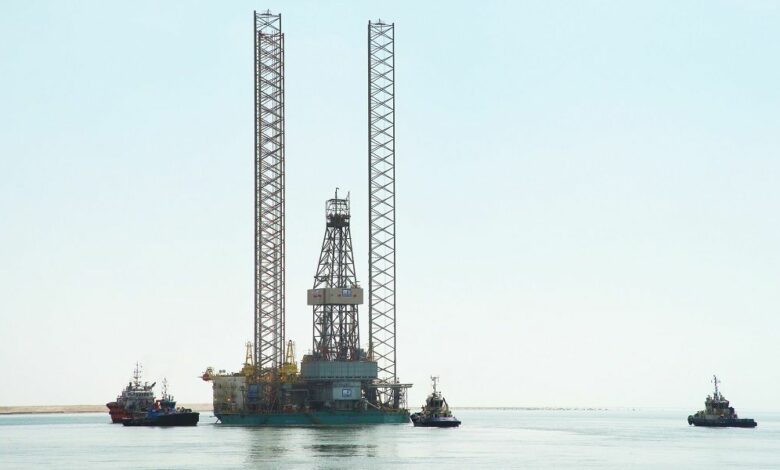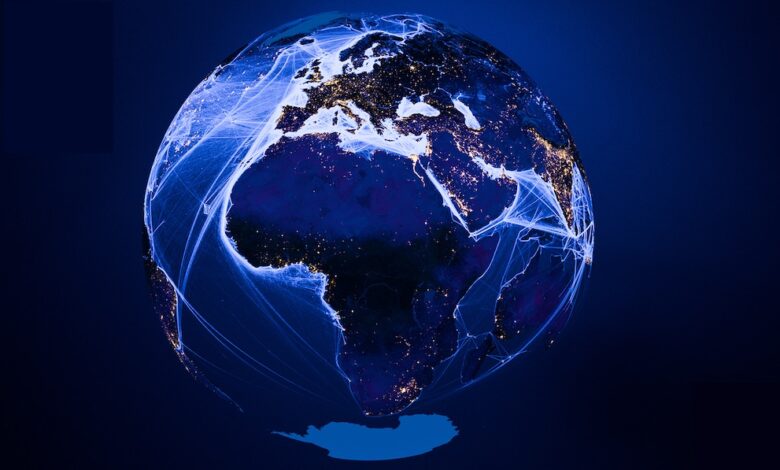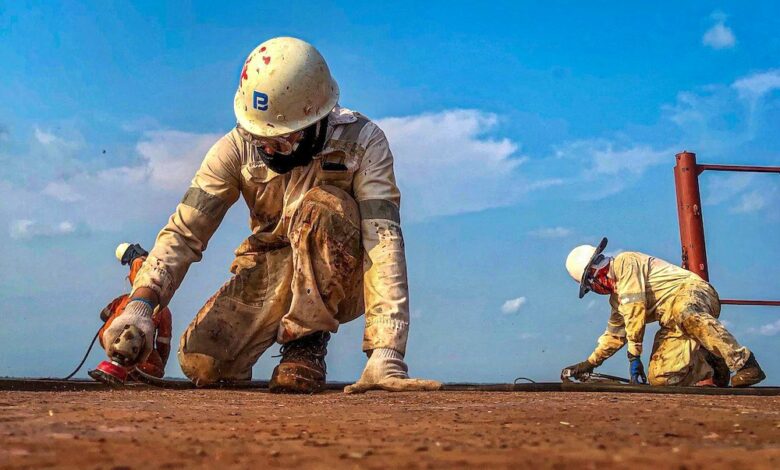Energy News Beat
Daily Standup Top Stories
The steep learning curve America faces if it wants to return to previous shipyard glory days
ENB Pub Note: Interesting article from America’s Shipyards. While we retool the 19,000 manufacturing shops that the Democrats and Republicans shipped to China, we should also look at building our commercial nuclear shipbuilding. This would […]
How to Strike Trade Deals in Record Time
ENB Pub Note: Wendy Cutler @wendyscutler from ForeignPolicy.com has some interesting points. I agree with some and disagree with others, but I found it worth reading. I will reach out and invite her to the […]
OPEC+ Vows to Offset 4.57 Million Bpd Overproduction by June 2026
ENB Pub Note: Excellent article from Tsvetana Paraskova for Oilprice.com. This brings up a talking point that I have been tracking. When the U.S. or other countries need extra money, they just print it, and […]
EIA Says U.S. Oil Production Will Peak in 2027
ENB Pub Note: While I do believe we may be at peak production in one basin, here is a new quote for you: “A country’s energy output is not defined by one basin.” There are […]
Highlights of the Podcast
00:00 – Intro
01:47 – The steep learning curve America faces if it wants to return to previous shipyard glory days
05:16 – What are the Potential Effects of Reclassifying CO2 as a Non-Pollutant
08:40 – How to Strike Trade Deals in Record Time
13:03 – OPEC+ Vows to Offset 4.57 Million Bpd Overproduction by June 2026
15:18 – EIA Says U.S. Oil Production Will Peak in 2027
Follow Michael On LinkedIn and Twitter
– Get in Contact With The Show –
Video Transcription edited for grammar. We disavow any errors unless they make us look better or smarter
Stuart Turley [00:00:00] The EU and the UK are following a path to decouple from the US and embrace China, while individual countries in the EU are looking to negotiate their own trade deals with the President Trump’s team. If those trade deals line up like they appear, the EU may have some real stability issues in the sale of the U.S. Dollar is through bond sales and currency holding for trade It is too early to see what the dollar has fallen under,.
Stuart Turley [00:00:33] Hello everybody, welcome to the Energy Newsbeat Daily Standup, my name’s Stu Turley, President of the Sandstone Group. It is crazy out there on the news desk, today is April 17th. Buckle up, we got us some stories. The steel curve America faces, excuse me, the steep learning curve America face if it wants to return to previous shipyard glory days. Got steel on my mind and you’re going to need a lot of steel to start building ships again. Going to be a big one. Let’s go to the next one. What are the potential effects of reclassifying CO2 as a non-pollute? How to strike trade deals in record time is really a very important item. There’s a pretty interesting points in here. OPEC vows to offset 4.75 million barrels per day of overproduction by June 2026. Buckle up. Got some information on that one. EIA says oil production will peak in 2027. Oh man gotta love a good peak story.
Stuart Turley [00:01:47] All right let’s start with the first story here. The steep learning curve America faces if it wants to return to the previous shipyard glory days and we take a look at what the actual ship building capacity is. The United States has numerous shipyards around various states. As of recent data, it has approximately 154 private shipyards actively engaged in shipbuilding that are very small, and there’s only 4 public shipyards dedicated to naval vessel maintenance and repair. We’re in a world of hurt when you consider the number of vessels that China builds in a year is about a thousand and we build three. So you’re you’re talking a Huge number of ships. Unbelievable. And we’ve got a list in here of all the different ones that are out there. The article that’s also in the story is from America’s shipyards. The stats around the surrounding steep learning curve want to claw back any market share and shipbuilding are astonishing. And the, but we are way, way behind. We are way way behind that’s a cross between a president Trump and Fonzie. So we’ll just leave that alone. The U S accounts for less than 1% of global output. How do you go attack? You got 99% you can go after, but you’re going to have to face a really big employed in shipbuilding today. It’s around one in every thousand. It’s just amazing when you take a look at that chart, it is really amazing. And so one of the things that I was really kind of trying to bring up to this point. The U S Navy has nuclear reactors down to a science and we could branch that expertise out into the commercial sector and keep the control and licensing under the U S military framework. What about reactivating the merchant Marines and building an entire business process around selling a ship? But having the United States maintain ownership of that nuclear plant on that ship, their LNG carriers are being built all over the place. So having a small nuclear reactor and a contract for 30 years to maintain it sounds like a pretty good deal because you have zero emissions. The United States has a trading partner. And you got the merchant marines reactivated and controlling this i would say that would be some pretty cool things to think about instead of just creating ships that are going to be around for 10 years 20 years build a ship that’ll be around for a long time put a nuclear reactor in the environment’s better have the u.s marine Merchant Marines maintain control of those reactors, then you could even leave the ships out if you wanted to or sign long-term contracts. I’ve got a bad little idea, but the steep learning curve America faces is about also all the workers getting rid of the Jones Act, all the steel mills that go with it, all of the engine components. This is a huge undertaking.
Stuart Turley [00:05:16] Let’s go to the next story here with old Lee Zeldin. What are the potential effects of reclassifying CO2 as a non-pollutant? The Trump administration is having a global impact for the better of humanity. I put that in there and I think that this is very important when you take a look at EPA being led by Lee Zeldon has a global impact even before they finished. Reconsidering the endangerment finding which classifies Co2 and other greenhouse gasses as pollutants under the Obama Clean Air Act. Yesterday, the Washington Examiner published the story, Green Banking Group softens rules in bid to stem Wall Street exodus. One of the largest international green banking alliances moved to loosen its climate targets. Roughly 80% of the NBZA members voted Tuesday on changing the rules with 90% of financial institutions voting in favor of loosening the targets. This is very, very important. And you take a look at the Exodus in In December and January, Goldman Sachs, Wells Fargo, Morgan Stanley, Citigroup, and Bank of America departed from the International Alliance. Why is this important? If you take a look at the banking industry not participating in the global impact of CO2 now, this is going to be huge. As President Trump has pulled out of the Paris climate accords. I would like to see us pull out of the UN, like COP 28 series or 29 series coming up and all of the other UN and EU things around the weaponization of the greenhouse gasses. And I think that when the banks follow and they do this, the insurance companies are also gonna follow along as well. Take an EV, your EV, when you buy an EV your insurance price on a car doubles. This is going to be very much the same way. The Trump administration’s EPA has not officially, but I go into a lot of different details in here, the Trump administration claimed that policies save households about 2,500 annually through lower energy costs that has yet to be seen yet, but, I believe that they can and the other way the left is saying that because Trump is now forcing the money back from the inflation reduction act, or as you heard Dan Bongino say the porculous bill, it would actually cost families $110 more in line lines that it’s going to save money rather than that. And the story ABC news blames Toronto tornado on, I’d like to blame Toronto, blames tornado No surge on climate change, but data says otherwise. I’ve been talking to folks for a long time and we’ve had seen a lot of data manipulation by the green energy policy folks for their own benefit. I’m glad to see that the EPA is really cooking along and following along. I’ve got Nathan Hammer that I’m going to have on the podcast and we’re going to talk more about regulations and that’s what I like is leaning on experts. When we talk about, also,.
Stuart Turley [00:08:40] The next story here, how to strike trade deals at record time. This story is from Wendy Cutler at foreignpolicy.com. She has some very interesting points and I disagree with some of them, but I agree with some her points as well too. And I’d love to have Wendy on the podcast to have her go forth and describe some of her solutions and things. Her statement that the dollar is falling instead of rising a defiance of tariff theory shows investors are losing faith in America. I totally disagree with that and what we’re seeing is more a shift in fundamentals. The EU and the UK are following a path to decouple from the US and embrace China, while individual countries in the EU are looking to negotiate their own trade deals with the President Trump’s team. If those trade deals line up like they appear, the EU may have some real stability issues, and the sale of the US dollar is through bond sales and currency holding for trade. It is too early to see what the dollar has fallen under. It’s too early see what it’s doing because the dollar has actually been lower under COVID. And so Wendy points out though, in her article, and she is the vice president, the Asia society policy Institute, countries around the world are scrambling to pull together their best teams and develop strategies and sudden offers on trade negotiations. Thus far the Trump administration has referenced a long list of requests from their foreign counterparts. And I think that president Trump is on the right track and go for it. Energynewsbeat.co and take a look at the full rest of this story here. But I think Scott is doing a bang up job, Scott Besson, and he is really running around trying to solve the problem. We are seeing a right sizing in trade. President Xi is meeting and he’s trying to work out more In Asia partners and he’s meeting with Malaysia and you take a look at Malaysia I’ve been looking up how much Malaysia is capable of drilling in natural gas and in oil and you take a Look at the amount of oil that Malaysia exports to China and then the amount of oil they are capable of producing and refining and they’re shipping a lot more oil to China than they are. So I think you just found one of the avenues for Iranian or Venezuelan or any of the other dark fleet oil going to China is through Malaysia because the numbers don’t add up. Don’t have proof on that, but the numbers don’t add up and when the numbers in the oil market don’t add up, you can generally find it on a dark fleet tanker somewhere.
Stuart Turley [00:11:46] Let’s go to one of the last stories here. Before I do, I want to go ahead and give a shout out to Reese Energy Consulting. Steve Reese and the gang over there at ReeceEnergyConsulting.com are fabulous leaders in the energy, natural gas, oil and gas markets. And if you are in Bitcoin, if you want to find stranded natural gas or you want a data center, Steve, I just had my podcast with him last week. The staff is working on it right now to get it produced and cut. And it is phenomenal. I believe it’ll be coming out on Friday, so that’ll be pretty cool. When we sit back and take a look at Reese Energy Consulting, they also do training. So as we go through and we mentioned training, there is a lot of training in natural gas that in oil and gas space that needs to be done, because we got a lot workers. Natural gas is going to be here for a long time, so… Check them out. If you also need oil and gas, buy a load of LNG, ship it around, they can track molecules all the way and have the ability to do that from the Haynesville Permian all the way out to Germany or around the world. You want something moved, they could do it.
Stuart Turley [00:13:03] Let’s go to OPEC Plus vows to offset 4.57 million barrels per day of overproduction by June 2026. This is a great article. From oil price, and I apologize. I cannot even begin to pronounce your name. Chatsavanya from oil, price.com. She brings up great points when the U S or other countries need money. They just print money. But when other OPEC plus countries, which, you know, you have Russia, you have Iran, you haven’t as well as you have all of those countries that are in there need extra money. They just drill for oil and gas and they sell more outside their quotas. So she brings up OPEC Plus members have submitted plans to compensate for a total of 4.57 million barrels per day in overproduction. Compensation plans detail meth monthly offsets primarily between May and October of 2025. But watch the dark fleet because you will probably see more activity in there and watch China. More and more activity is going to be going on through China and its satellite countries like Malaysia that are going to selling them things that they need outside of saying. The producers in OPEC plus who have quotas have busted their overall output ceiling by a mouse of 319,000 barrels per day according to the plant survey. So I applaud Saudi Arabia. In fact, I just had a great interview with a great thought leader and Mike McDonald and you’re going to see that podcast come out hopefully in the next week or so. We talked about Saudi your ABA and their leadership. They’re doing the best that they can to try to keep the oil price. In my opinion I think that there is evidence to see that they needed around the 80 to 85 dollar range. There’s also discussions that they only needed around the 75 dollar range I’m more inclined to believe that they still need it around the eighty to eighty five dollar range and I they do the best they can, to keep that price.
Stuart Turley [00:15:18] The EIA says U.S. Oil production will peak in 2027. So as we take a look at this, because listen to this quote, a single oil and gas play does not determine a nation’s energy output. That’s a great quote. Oh, that’s from me. The E.I.A. Projects U. S. Crude oil production and will peak approximately 14 million barrels per day in 2027. This is from the EIA, the Department of Energy. I agree it might, but I disagree from the standpoint. There are still a lot of places around a drill. Shale oil production in the U.S. Is expected to peak in 2027, but there’s other places to drill. It just means you need to plan now so that you can go after those other places. After the peak, U. S. Oil production is forecast to decline through 2050. All of this is assuming that oil demand is going to go away. Until new technologies come around you’re not going to see the oil demand we need and still it is well documented four trillion dollars worth of oil and gas investments just to meet normal decline curves. If China is already arranging to buy oil from the dark fleet in other capacity, they still think they’re going to have some oil on demand and they are working on contracts outside of the Trump tariff war going on right now. So I think that we are not going to see that. I don’t have enough information to say that definitively the I agree with the EIA. I don’t. Because I happen to know there’s still a lot of oil up in the Arctic. There’s a lot of oil in Alaska, and there’s a LOT of oil off the Gulf. There is a lot oil in California that can still be drilled, but you’re going to have to have new leadership in that area.
Stuart Turley [00:17:24] So with that, like, subscribe, share this, read this to your pets, give them a hug, and we sure appreciate all of our listeners and We’re still on track for 15.5 million transcripts read. That’s not including the download. We’ll be well over 2.2 million downloads this year and we appreciate everybody listening to energy neewsbeat podcast, I’m Stu Turley Have a great day!
The post Striking Fast Trade Deals appeared first on Energy News Beat.
























